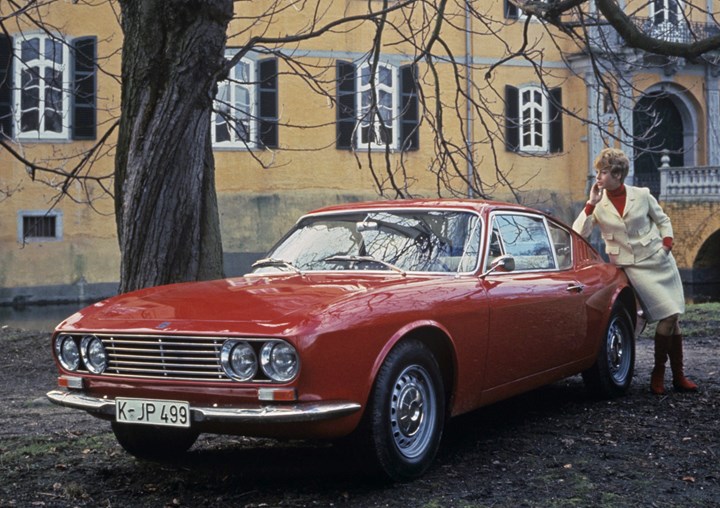
For just 8 years, OSI built cars in small series for other manufacturers. Here's a look back at the behind-the-scenes player behind some highly original models.
In 1960, the company OSI (for Officine Stampaggi Industrali) was born out of a need for industrialisation. It seems that Ghia did not have the capacity to assemble cars in series, even in modest volumes. Segre had, however, shown new bodywork models to Fiat (2300S coupé) and Innocenti (950 spider) and had obtained contracts to build these vehicles in relatively large quantities. In order to find a factory and the funding to go into production and fulfil its contracts, Segre turned to Olivetti, an Italian heavyweight at the time. An agreement was reached and a new company was set up jointly by Ghia and Fergat, a stamping and wheel manufacturing company owned by Olivetti.

Favourable period
The fruit of this union, based just opposite Via Agostino da Montefeltro in Ghia, was called OSI, for ‘Officine Stampaggi Industriali’ (Industrial Stamping Workshop). With a share capital of 275 million lire, OSI entered the automotive industry at a particularly favourable and dynamic time in national and international economic life. The company's chairman was Arrigo Olivetti, while Segre was its managing director. The OSI plant covered an area of 21,000 square metres and included two continuous-loop production lines, with the possibility of installing a third, as well as a 780-metre-long paint line. It employed around 600 people and could produce around 50 cars a day.

Eclectic production
After building the Innocenti 950 spider, a pretty little vehicle designed by Tom Tjaarda for Ghia, and the Fiat 2300 coupé, OSI also assembled the Fiat 1500 coupé. However, it was above all the Osi Ford 20 M TS, based on the Taunus 20 M, that brought the company to the attention of the general public and made it a great success in Europe. Between 1967 and 1968, 2,200 examples of this attractively designed car (designed by Sergio Sartorelli, who also designed the Volkswagen Karmann-Ghia Type 34) were produced, before being replaced by the Ford Capri.

Early termination
Another major contract for OSI was the Ford Anglia Torino, a model initiated by Ford's Italian subsidiary. Designed by Giovanni Michelotti, just over 10,000 of these cars were produced and sold not only in Italy, but also in Belgium, Luxembourg and the Netherlands. Segre died unexpectedly in 1963 from complications related to appendicitis, leaving the rapidly company. Links with Ghia and Ford became difficult. He was replaced by Giacomo Bianco from Fergat, but the latter did not really find any new contracts, which put the company in difficulties. In 1966, 2,000 employees were made redundant and production of OSI cars ended in December 1967. Bianco was eventually sacked and Sartorelli was given the task of winding up operations, integrating the OSI design office into that of Fiat in May 1968. OSI did not disappear altogether, however, as the company remained active as a producer of steel stampings and industrial equipment.


















